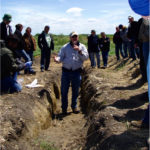ICE Canada canola prices bounced around within a wide range during the week ended Nov. 17, but finished on a firmer note as a rally in Chicago Board of Trade soybeans gave canola a boost. Any strength was largely tied to chart-based speculative buying, with no real fresh fundamental news as far as canola is








